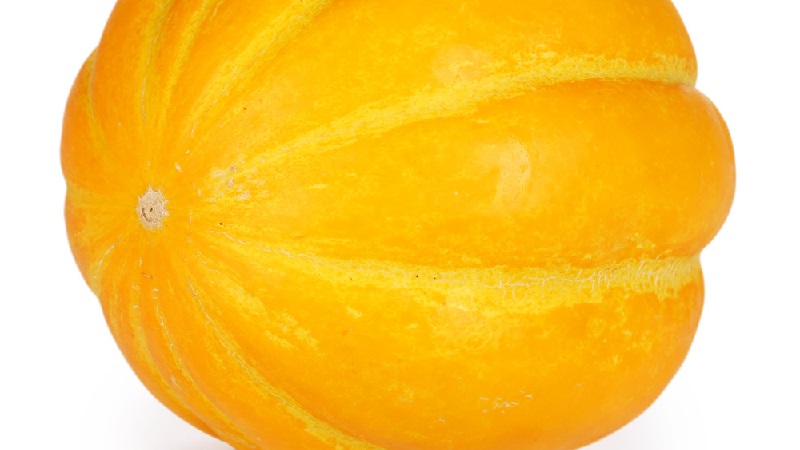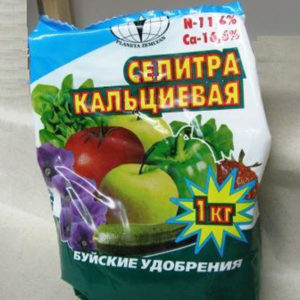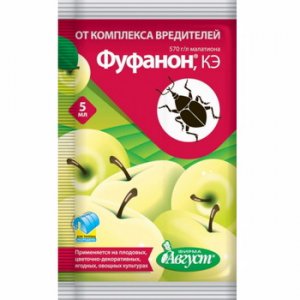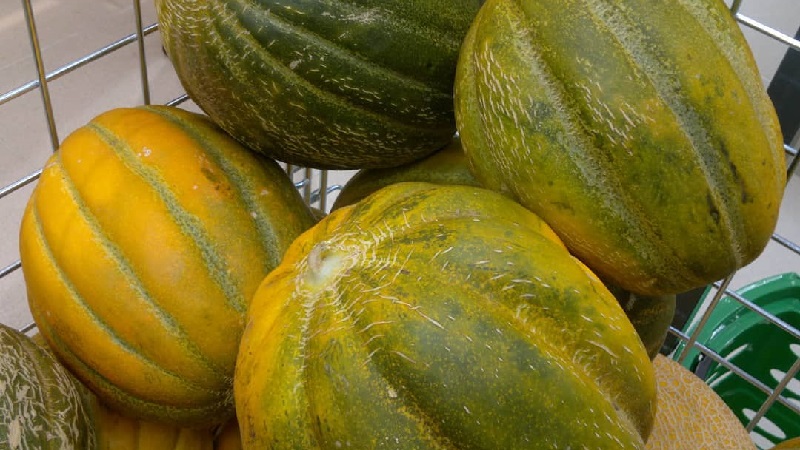How does the "Camomile" melon differ from other varieties and is it worth growing
Melon belongs to the melon crops. The country of origin is Africa, while the melon was brought to Europe only in the 16th century. Today, the culture is actively grown by gardeners of the southern regions, since fertile land and a warm climate are needed for a rich harvest.
In this article, we will consider one of the most popular varieties - Chamomile, study the features of its cultivation and ways to increase yields.
The content of the article
Description of the melon Chamomile
Before growing a melon on your site, it is worth studying the characteristics of the variety and its distinctive features. Chamomile shows excellent results only in nutrient soil, while only large seeds must be selected for sowing. Chamomile, like most melons and gourds, ripens gradually, the fruiting period of the variety is extended.

Distinctive features
Chamomile is a mid-season variety, the first harvest is obtained 80-90 days after planting. Bushes of medium foliage, compact. The variety is unpretentious in care, but sometimes it requires the formation of a bush. Melon is perfectly adapted to hot and dry climates, so gardeners recommend planting it in the Astrakhan and Voronezh regions.
Specifications
The fruits are slightly elongated, round, pale yellow in color with green veins. The pulp is white, firm. Chamomile's taste is not as pronounced and sweet as, for example, most nutmeg varieties, but the melon has a pleasant structure and freshness.
In addition, the fruits are well stored due to their dense and hard peel, and they also tolerate long-distance transportation. The weight of the melon is from 1.5 to 4 kg, and summer residents collect about 6 kg of beautiful yellow fruits from one bush.
Interesting! The pulp contains natural, easily digestible sugars, as well as protein, starch, pectin, organic acids, fiber, minerals and vitamins. The product is especially appreciated in the prevention of heart, kidney and urinary tract diseases. Melon contains valuable iron, which is useful for low hemoglobin, anemia, and general fatigue.
How to grow this variety yourself
First of all, take care of future beds. Since the melon loves vitamin and loose soil, in the fall, dig up the soil on a shovel bayonet and add humus at the rate of 4 kg per 1 sq. m. If the area is clay, add river sand or sawdust.
With the arrival of spring, dig up the beds again, then apply phosphorus or potash fertilizers. Before planting directly, add rotted manure to the ground, it will serve as a good nitrogen fertilizer.
Landing
 Before planting, disinfect the seeds with a solution of boric acid and zinc sulfate. To disinfect, simply soak the seed for 12 hours, then remove and dry. Also, experienced gardeners recommend hardening the seeds before sowing by immersing them in cold water for 18 hours, and then in warm water for 20 hours. Repeat these steps for two weeks. Hardening strengthens the plant's immunity, protects against diseases.
Before planting, disinfect the seeds with a solution of boric acid and zinc sulfate. To disinfect, simply soak the seed for 12 hours, then remove and dry. Also, experienced gardeners recommend hardening the seeds before sowing by immersing them in cold water for 18 hours, and then in warm water for 20 hours. Repeat these steps for two weeks. Hardening strengthens the plant's immunity, protects against diseases.
In the prepared soil, make holes 80 cm apart. It is best to plant Chamomile after all frosts, around late May or early June. Sprinkle the planted seeds with earth and water. In the first few days, give the seedlings an artificial shade so they adapt better. If the weather is chilly, cover the sprouts with plastic wrap.
Important! Many people use a seedling planting method. Plants are prepared 25 days before planting in open ground. For this, soil is placed in peat tablets and seeds are planted in 2-3 pieces in each container. Seedlings are placed in a warm and dry place with an air temperature of 18 degrees. Seedling care is simple, the main thing is that water does not fall on the stems and leaves during irrigation, but goes directly to the root.
Care
While Chamomile is growing in the ground, it is required to regularly water, weed and fertilize the beds. Let's take a closer look at how to care for a melon in order to harvest a rich harvest:
 Loosen the soil carefully so as not to injure the roots of the plant. It is best to loosen the soil 10-15 cm away from the rhizome. After the appearance of lateral lashes, the plant is spud so that the stems receive as many useful substances as possible.
Loosen the soil carefully so as not to injure the roots of the plant. It is best to loosen the soil 10-15 cm away from the rhizome. After the appearance of lateral lashes, the plant is spud so that the stems receive as many useful substances as possible.- Water the soil sparingly, because the melon does not like excess moisture. Wait for the soil to dry and only then water Chamomile. Moderate watering will help prevent bushes from rotting and losing crops.
- Don't forget to remove the weeds. The fact is that weed grass increases the risk of developing diseases and pests, so every 10-12 days, use weeding to rid the beds of extraneous vegetation.
- From fertilizers, gardeners prefer to use phosphorus, potash and nitrogen fertilizers. Without them, it is almost impossible to get a juicy and beautiful melon. As it grows, feeding is organized every 2-3 weeks. Infusions of herbs, humus, bird droppings, humus and ash are used.
If you are growing melon in a greenhouse, remember to regularly ventilate the facility. The greenhouse has a special microclimate and high humidity, so it is important to let fresh air into it.
Also watch out for pollination: if it goes badly naturally, you should intervene. Check the flowers of the ovaries at the base. If it is, then it is a female flower; if not, then male. Take a small brush and transfer the pollen from the male flower to the female one.
Interesting! French King Henry VI condemned the melon for indigestion caused by excessive consumption of the product. In an official setting, the melon was publicly found guilty. However, after a while this incident was erased from memory, and people again began to eat the melon.
Features of cultivation and possible difficulties
 Often, gardeners grow a melon in a spread, that is, with whips spread over the garden. Above the fourth leaf, the main shoot is pinched, as a result of which 2 lateral stepsons grow, which after a while pinch. With the help of this technique, all the nutrients go to the formation of the fruit, and not to the development of the tops.
Often, gardeners grow a melon in a spread, that is, with whips spread over the garden. Above the fourth leaf, the main shoot is pinched, as a result of which 2 lateral stepsons grow, which after a while pinch. With the help of this technique, all the nutrients go to the formation of the fruit, and not to the development of the tops.
Growing melons, summer residents are faced with the problem of rot. The fact is that the stems often do not support the weight of the fruit, which is why the melons end up on the ground. Due to dampness, they begin to rot. To prevent this, place a small board under each fruit.
Another important point is the growth of the root system. The roots of the melon go deep into the ground, in the conditions of warm regions, this is how the plant obtains water for itself. It is important to make the roots grow in breadth, not in depth. To achieve this, irrigation along the furrows, which are located in the aisles, will help. Before watering the beds, be sure to loosen and weed.
Plus, regularly apply organic fertilizers and mineral complexes. Ideally, root dressings alternate with foliar fertilization, so that the culture rarely gets sick and shows excellent results.
The following remedies are recognized as the most effective:
- Infusion of grass and manure. Watering with its use lowers the acidity of the soil and makes the soil more nutritious and useful for the development of culture. Any herb is suitable for preparing the infusion.
- The ash solution improves the palatability of the fruit.
- Potassium monophosphate controls water balance, allows fruits to set quickly.
- Calcium nitrate protects against rot and common crop diseases.
Diseases and pests
 The Chamomile melon, like many melons and gourds, has a predisposition to a number of diseases. They arise, as a rule, due to improper care or high humidity.
The Chamomile melon, like many melons and gourds, has a predisposition to a number of diseases. They arise, as a rule, due to improper care or high humidity.
The most common diseases:
- Root rot, which "paints" the roots in a rusty color, makes them weak and thin. After a while, the leaves dry out, due to which the plant dies. As a preventive measure, use mandatory disinfection of seeds before planting.
- Fusarium wilting is a fungal infection. Appears during flowering or fruiting. The leaves wilt and become covered with a gray bloom. If measures are not taken in time, the plant dies in 1 week. Even if the culture was saved, the fruits will be less tasty and sweet. For prophylaxis, phosphorus and potassium agents are suitable.
- Downy mildew is another fungus. It appears as small yellow spots on the leaves. Over time, the leaves take on a sick appearance and gray color. In case of illness, gardeners are advised to immediately seek help from professional drugs, for example, "Topaz" or "Oxyhom". It is important to observe the indicated dosage and manufacturer's recommendations.
 Of the pests, the melon fly is the most dangerous. In addition to melon, the insect harms watermelons and cucumbers. The larvae enter the fruit, where they begin to rot. Within 8-18 days, the pest is able to destroy 100% of the crop.
Of the pests, the melon fly is the most dangerous. In addition to melon, the insect harms watermelons and cucumbers. The larvae enter the fruit, where they begin to rot. Within 8-18 days, the pest is able to destroy 100% of the crop.
If you find a deep speck on the melon, immediately pick it and burn it away from the beds. Then treat melon beds with Conifor or Fufanon.
For preventive purposes, gardeners are advised to process the beds with Zenith or Rapier.
Spraying is carried out twice a season.... The first time - after the formation of the first leaves, and the second - during the formation of loops. It will also prevent the appearance of a pest; compliance with crop rotation and timely application of mineral and organic fertilizers.
Harvesting and application of the crop
The ripening time depends on climatic conditions, soil condition and care characteristics. To understand whether the Chamomile variety is ripe or not, a sweet aroma will help. Ripe fruits have a classic melon smell. If the melon does not smell, then it is not yet ripe.
Important! A well-known method will help to understand the degree of maturity - to knock on the fruit with your palm. If the sound is muffled, then the melon is ripe. In addition, ripe fruits acquire a uniform pale yellow color.
 A dry and windless day is chosen for collection. Spread the collected ripe fruits in the sun. Melons dry up within a week - this will increase their shelf life. If you want to keep the harvest longer, select only whole and even fruits with a 5 cm stalk. The optimum storage temperature is from 5 to 15 degrees.
A dry and windless day is chosen for collection. Spread the collected ripe fruits in the sun. Melons dry up within a week - this will increase their shelf life. If you want to keep the harvest longer, select only whole and even fruits with a 5 cm stalk. The optimum storage temperature is from 5 to 15 degrees.
Melon is mainly used for dessert and sweet disheshowever, the taste of Chamomile is also great for appetizers and salads.
For example, fried melon in batter, pasta salad with shrimp and melon, and chicken fillet with melon salsa will decorate the table. But melon desserts are especially appreciated - jelly, smoothies, milkshakes, marmalade, sorbet, ice cream.
Interesting! Even a sweet soup is made from melons. And from the juice of melon, lime and orange with the addition of cinnamon and mint, you can create an appetizing and refreshing summer dessert.
Advantages and disadvantages of the variety
The Chamomile variety is appreciated for its unpretentious care and attractive presentation. Melon itself, as well as dishes using melon, are not only tasty, but also healthy. Due to the rich content of vitamins and macronutrients, the product is actively used in dietary nutrition.
Of the shortcomings, gardeners note the fact that the Chamomile variety does not have a sweet enough taste. Also, the variety is susceptible to certain diseases of the crop, and shows a good harvest only on a fertile and nutritious bed.
Reviews about the variety Chamomile
Gardeners across the country share with each other their impressions of the Chamomile variety. Here's what they say about culture in different parts of Russia:
Irina, Sochi: “I had never heard of the Chamomile variety before, until one day the seller advised me to buy seeds. Grew up seedlings, although the soil in the garden is fertile. The fruits were tied together, they did not hurt anything. At the end of July, I pinched the top and removed the side lashes. The fruits are beautiful, juicy to the taste, moderate sweetness. In my opinion, the variety is excellent. "
Mikhail, Moscow: “I really love sweet nutmeg melons, their aroma and taste are incomparable. The Chamomile variety did not promise such results, but I still liked it. The care is simple, requires a minimum of attention. The fruits are not bad, they are great for fresh consumption. "
Olga, Saratov: “I planted the Chamomile variety twice, and both times I was disappointed. The fruit tastes fresh, watery, there is no aroma or sweetness. I will definitely not plant more, I would rather spend my time on more popular and productive crops. "

Conclusion
Melon Chamomile has many beneficial properties. The product is irreplaceable in the kitchen, especially in summer and autumn. Many people love the melon culture, but it shows a stable yield only in the southern regions. Care is simple, it consists of watering, weeding and fertilizing the variety. Melon Chamomile has excellent shelf life and can be well transported over long distances.